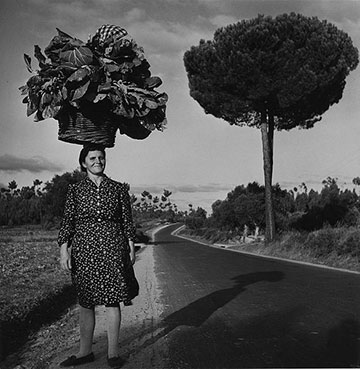Have you ever found yourself trudging up your front steps, arms bulging with groceries, and suddenly pondering …
Just how do those picturesque rural women in faraway countries glide over the open ground with loads every bit as bulky on their heads?
On their heads!
I, for one, can barely maintain a book on my head in a mannerly fashion while creeping across the room—much less gallons of water … for MILES.
Balancing burdens few of us could comfortably bear on our backs is a tradition as old as civilization. The ancient Egyptians, in a ritual of repentance, put a sizzling spin on the practice by carrying a basin of burning coals atop their heads.
Ouch.
Most “tote-à-tête” cultures, however, seem more interested in practicality than penance.
After eons of head carrying, African-American slave women upheld the practice throughout 19th century in the United States. It was considered an efficient means of moving stuff in the absence of wheeled transport.
Why not?
According to one observer during the Civil War in South Carolina, “I have seen a woman, with a brimming water-pail balanced on her head, or perhaps a cup, saucer, and spoon, stop suddenly, turn round, stoop to pick up a missile, rise again, fling it, light a pipe, and go through many revolutions with either hand or both, without spilling a drop.”

A peasant woman carries her garden produce on her head in Portugal, circa 1950. Photo courtesy of Charles Fenno Jacobs, Wikimedia.
If only …
Can you imagine how much work a gal could get done in a day?
Even now, women around the world are navigating with their noggins piled high.
- In India, women carry baskets of bricks to workmen on construction sites. Hmmm … what’s wrong with this picture?
- In East Africa, Luo women carry loads weighing up to 70 percent of their own body weight. Heck, I was proud I could carry a 60-pound backpack on my 95-pound frame way back in my Forest Service days. But on my head? Definitely not.
- In Ghana, affluent urbanites employ impoverished young women to work as “kayayo” (head porters) for 2 dollars a day. No comment.
As uncomfortable as these practices might make a liberal-minded modern Westerner, research has concluded that head-carrying is as efficient as it is astounding. Up to 20 percent of a person’s body weight can be carried on the cranium with no extra exertion of energy!
Sounds good, but I wouldn’t start stacking those groceries on your head just yet.
Not only do head porters practice for years (yes, years) to develop their strength and grace, they also develop a peculiar gait conducive to the undertaking. And then there’s that minor matter of a grooved skull …
Still, when you look at the smiling lady in the photo, doesn’t it make you want to at least give it a try?





















































This seems like to me the perfect set up for debilitating cervical arthritis! I never could understand how the weight would not just compress the vertebrae together over the years. Maybe not? But I have to admit that this Farmgirl is to much of a wimp to think about doing the task!!
I was carrying a bag of clay the other day and my arms couldn’t handle it so I put it on my head, it was just soft enough that my head was quite comfortable and no great balance was required, I just kept my hands up there to steady it. Once I got it down at my destination though my neck, back and chest felt compressed and cramped.
No doubt! How on earth do these women do it?